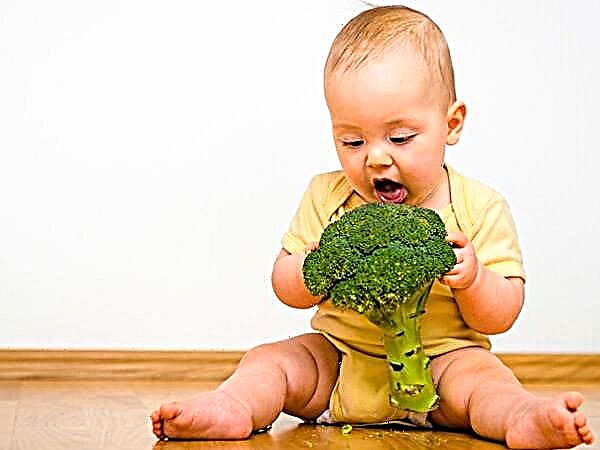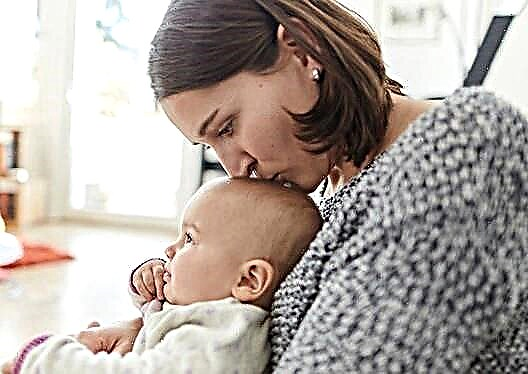
Starting to learn and study numbers and counting, the child is faced with the concept of the composition of a number. Many parents do not think or pay attention to this while memorizing sequences. However, studying the composition of numbers will speed up memorization, as well as the child's understanding of the principle of the formation of numbers.

Why is this needed?
Teaching the child the composition of the number is important. Starting from a simple 10 and introducing the concepts of "tens", "ones", you will facilitate the process of memorizing numbers. Also, the child will logically understand the method of forming numbers from 10 onwards. This will be a plus for performing arithmetic operations, comparing numbers.
The beginning of home schooling will be a successful start in the education of your baby. He will not experience stress when solving examples and problems and will be left behind. In the modern education standard, the emphasis is on counting with the help of the composition of the number, and not using counting sticks and fingers, so learning is more intensive and efficient.


Optimal age
The concept of the optimal age is relative, because someone even at 4-5 is drawn to counting, and it is difficult for someone to do it at school. However, there is an important preschool period - 5-6 years. It is then that it is important to instill in the child the desire to learn and learn something new. A learning bonus is the flexibility of the baby's mind. In the preparatory group, the emphasis is on counting. Children are taught to add and subtract using simple pictures, life examples, or fingers.
To facilitate this process, it is now important to teach the child the composition of numbers. At school, work with the composition of numbers begins in the first grade. If the first half of the year passes at an easy pace, then the speed of learning increases further: children are taught numbers up to a hundred.


How to teach fast counting?
Teaching a child to count to 10 is easiest. His further understanding of numbers depends on how this process goes. Start simple: teach your child to count everything that he sees around (steps, cars, trees on the way to kindergarten).
Be sure to focus on the unit. There should be not a colloquial "one", but a mathematical "one". Don't forget about emptiness - zero. Next, start learning numbers from books, read fairy tales with their use. Then pay attention to the countdown (rocket flight, reduction of berries, sweets). It is easiest to learn a count of 10.


To consolidate, play with houses for numbers: ask two numbers, and the child must say which one is between them or before and after. For example, 3 and 5. Between them is the number 4. Before 3 there is 4, and after 5 - 6. Write a number on a piece of paper and ask to find the required number of objects (beads, grains, peas). It is imperative to use clarity: toys, numbers, magnetic boards.
The more often you count during the game, the faster the material will be absorbed. The main thing in this matter is not memorization, but an understanding of numbers and quantities.


We teach to count correctly
After studying the numbers, you can start counting operations. Show your child the "trick" how two numbers become one by combining objects or, conversely, separating them. Next, show how you can count on your fingers and using different objects. Compare numbers. Teach you to determine the lesser and the greater of two digits. It is important to study the signs of operations and designate their names.


When it comes to the number ten, start introducing the concepts of "ones", "tens".
Let the figure become a two-story house. We study the composition. Dozens are floors and units are apartments. Explain the numbers of the second ten with the help of identical toys lined up in two rows of ten - from 11 to 18. Next, note that the number 19 is the last in the second ten, which means that you need to replace the number one by 2 - we get 20. It will be easier to remember if items will be numbered from 0 to 9.


You need to teach the child to make a number from two primes and call it. Offer two numbers and ask them to make up a complex number. When the material is mastered, teach the opposite - to parse the number into units and tens. Training should take place in a playful way. So the child's interest will not disappear and the lesson will turn into a fascinating acquaintance with numbers. If you follow the rules, then the oral account will be given with ease.
Remember that speed is not important, but process. It is necessary to understand the formation of numbers, and not just mechanically memorize what the child is always hearing.


Verbal counting
Verbal counting allows you to quickly complete tasks. To make it easy, you need to explain the numerical composition to the child. To do this, lay out the numbers from 2 to 10. The larger the number, the more attention should be paid to it. Explain that to count past ten, you must mentally go through the constituent numbers. For example, 8 + 7. Ask your baby how much 8 is needed to get 10.
Offer to expand the number 7 using two. Then the child will understand that the answer will be 5. And addition will give us 15. At first it will not be easy, but when the child masters this method, oral counting will be adjusted.


Do not overdo it, the lesson should not exceed 10 minutes. You can count several times a day or take a one-day break.
When switching to oral counting, limit the child in using counting materials (fingers, sticks), all this will only slow down the learning process. Of course, you should not remove the material abruptly, do it gradually.

Counting materials
The choice of counting materials is very rich today. The most famous are counting sticks. Parents are attracted by the ease of use and affordability. However, simplicity does not provide high efficiency. The child becomes dependent on the template and cannot translate such an account into an oral one.
There are many cards: "Composition of numbers", "Number houses", "Flower", "Domino". All of them are sets of composite countable material with variable characteristics. The child learns to find the components in the number, that is, he learns that ten consists not only of two 5, but also of 8 and 2, 7 and 3, and so on.
Wooden and plastic sets of numbers and signs for calculations with sticks in the kit also perfectly allow you to develop visual memory, correlating the number of sticks and the number. Classic abacus, abacus abacus are also perfect for studying the composition of numbers. Here is a pronounced method of decomposing numbers, adding up to ten and the remainder to get an answer.


Digital drums with numbers and signs are used for more experienced kids. The principle is simple: the child goes through the wheels with numbers and signs and gets a visual example for the solution. For the smallest - pyramids and pins. Simple counting and shifting will help you memorize numbers.


It is more interesting for the kid to create counting materials together with his mother. Draw together, create boxes with numbers and fill them with beads, count felt-tip pens, pencils, sculpt a number and, accordingly, peas or bagels. That is, combine different methods and methods of calculations for better memorization.


Popular techniques
There are many methods for studying the composition of numbers and you can choose the one that suits your child.

Didactic materials, books, tutorials - all of them are aimed at facilitating the study of numbers, their memorization and application in teaching.
- "Wonderful training", by Elena Bortnikova. The manual is intended for children from 4 to 6 years old. It is aimed at developing both mathematical skills and logic, which is necessary for oral calculation. With the help of poems, drawings, assignments, the child easily acquaints himself in a playful way with such complex concepts as number, number, quantity, and so on.


- Nikolay Zaitsev's technique. Training on the cards "Stoschet". Figures up to 100 with their composition. The required number of dots is located under each digit, which corresponds to tens and units. This technique is often used in kindergartens.

- "Mathematical Steps" by Elena Kolesnikova... For children from 3 years old onwards. It starts with a simple one (geometric shapes, toy counting and acquaintance with numbers in a playful way), gradually the tasks become more complicated, as a result of classes, the child comes to understand the concept of "number composition".


- "I am studying the composition of a number." Didactic material with many cards. The card includes numbers, the number of objects corresponding to the number (dominoes, dice), as well as the composition of the given number.

Studying the composition of the number is very important for the easy learning of the child at school. The sooner you start introducing your kid to numbers, the faster he will understand the composition of the number and learn to count.
You can use the following video as you teach your child the composition of numbers.



